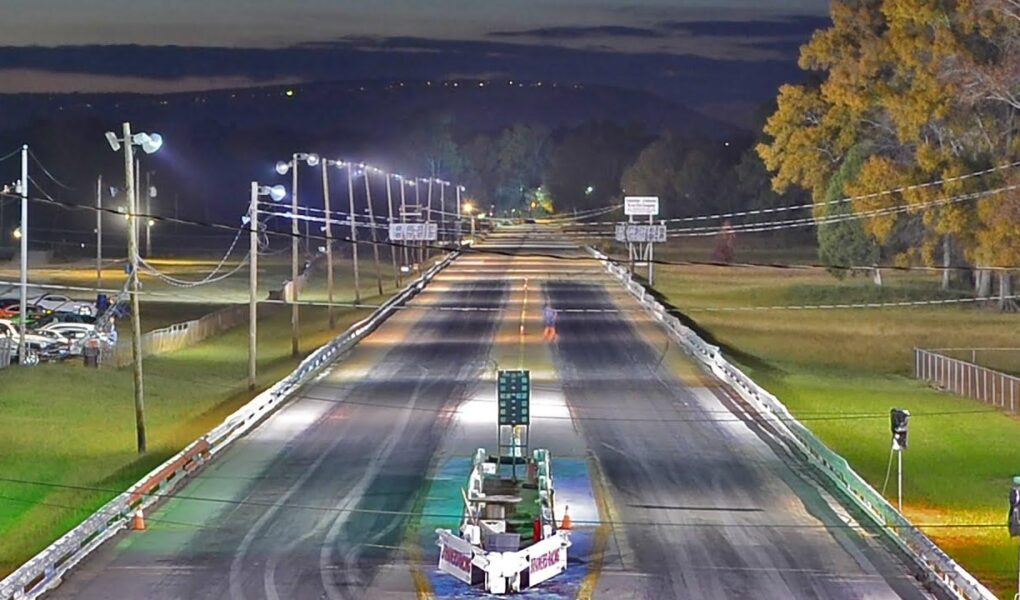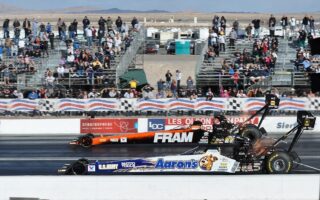Title: The Thrill of the Strip: An Inside Look at Drag Racing Culture
In the heart of the motorsport universe, where speed meets precision and adrenaline fuels the passion of countless fans, drag strip racing stands as a quintessential embodiment of competition and exhilaration. Each weekend, at venues across the globe, the roar of engines ignites the excitement of drivers and spectators alike, drawing them into a world where the quarter-mile is the ultimate proving ground. Here, in this high-octane arena, mere seconds can separate triumph from defeat, and every inch counts in the relentless pursuit of glory. As we delve into the intricacies of drag racing, we’ll explore its history, the technology that propels it forward, and the diverse community that thrives around it, celebrating not just the love of speed, but the camaraderie and craftsmanship that make this sport truly unique. Buckle up as we take you on a journey down the strip, where the only limit is the horizon of possibility.
Table of Contents
- Understanding the Basics of Drag Strip Racing Mechanics
- Essential Gear and Safety Equipment for Aspiring Racers
- Mastering Racing Techniques for Optimal Performance
- Exploring the Drag Racing Community and Events for Enthusiasts
- Q&A
- In Summary
Understanding the Basics of Drag Strip Racing Mechanics
At the heart of drag strip racing lies a compelling blend of speed, precision, and strategy. Drivers are not merely racing; they are engaged in a meticulous dance with their machines, where every fraction of a second counts. Understanding the mechanics of drag racing involves grasping the essential elements that contribute to a successful run. Key components include the engine, which generates horsepower; the transmission, responsible for shifting gears efficiently; and the suspension, which plays a crucial role in transferring power to the ground. Additionally, factors such as tire selection, track conditions, and vehicle aerodynamics significantly influence performance.
A typical drag strip is set up for direct competition over a standard distance, often 1/4 mile (402 meters). This format allows racers to focus solely on acceleration, making the start, or ‘launch’, a critical aspect where drivers must perfectly balance throttle control to prevent tire spin. Here’s a simple breakdown of what happens during a typical run:
| Phase | Description |
|---|---|
| Preparation | Tuning the car for optimum performance |
| Launch | Achieving maximum acceleration without losing traction |
| Gear Shifts | Smooth transitions to maintain power and speed |
| Finish | Crossing the finish line at peak speed |
Essential Gear and Safety Equipment for Aspiring Racers
Stepping onto the drag strip is an exhilarating adventure, but preparation is key to ensuring both performance and safety. Every aspiring racer should invest in a range of essential gear to maximize their experience. Start with a quality helmet that meets safety regulations and offers superior impact protection. A racing suit, crafted from fire-retardant materials, not only protects against heat but also adds a layer of professionalism. Other vital items include gloves for grip and protection, along with race shoes designed to offer stability and precision on the pedals.
Equipping yourself with the right safety equipment can make a significant difference on race day. The following gear is instrumental in enhancing safety for both you and your vehicle:
- Fire Extinguisher: A must-have in case of emergencies.
- Roll Cage: Provides structural integrity and protection during collisions.
- Wheel Chocks: Prevents vehicle roll when parked.
- First Aid Kit: Essential for treating minor injuries onsite.
| Gear | Purpose |
|---|---|
| Helmet | Protects head from impact |
| Racing Suit | Guards against fire hazards |
| Fire Extinguisher | Emergency fire control |
| First Aid Kit | Immediate medical assistance |
Mastering Racing Techniques for Optimal Performance
Dominating the drag strip requires more than just raw power; it necessitates a keen understanding of various racing techniques that can elevate your performance. Effective launch techniques can significantly impact your time at the starting line. Mastering the art of the launch involves rev matching and the use of a smooth throttle application. Here are a few crucial aspects to focus on:
- Staging: Positioning your vehicle precisely within the staging lights is vital for achieving an optimal start.
- Reaction Time: Practicing your reaction time helps you make lightning-fast starts; consider using a reaction timer.
- Weight Transfer: A good launch utilizes weight transfer to enhance traction and minimize wheel spin.
Additionally, knowing how to navigate the end speed stage effectively can turn the tide in your favor. This phase is not just about speed but managing your vehicle’s control and aerodynamic efficiency. Make sure to consider:
| Technique | Description |
|---|---|
| Throttle Control | Maintaining consistent throttle for optimal speed without losing control. |
| Shift Timing | Perfectly timing your gear shifts to minimize power loss. |
| Aerodynamics | Adjusting your positioning to reduce drag during high-speed runs. |
Incorporating these techniques into your practice can greatly improve your drag racing performance, making your time on the strip not only competitive but also thrillingly efficient.
Exploring the Drag Racing Community and Events for Enthusiasts
The drag racing community is a vibrant mix of adrenaline seekers, car enthusiasts, and dedicated competitors who share a passion for speed and precision. Drag strips serve as the epicenters of this thrilling hobby, where weekend warriors and seasoned racers alike gather to showcase their vehicles and test their skills. Throughout the year, various events provide the perfect backdrop for participants to connect, exchange tips, and revel in the roar of engines. Attendees can expect a sense of camaraderie, vivid displays of automotive craftsmanship, and the excitement of competition, whether it’s a casual race or a more serious tournament.
For those eager to dive into the world of drag racing, the choices are abundant. Participants can engage in local events or even strive to compete on a national level, all while becoming part of a supportive community. Essential elements of these gatherings include:
- Car Classes: Multiple divisions based on vehicle specifications allow everyone a chance to shine.
- Time Trials: Pre-event runs to help drivers hone their skills and fine-tune their vehicles.
- Workshops: Educational sessions on vehicle maintenance, driving techniques, and safety tips.
- Networking Opportunities: Connecting with fellow enthusiasts and potential mentors in the industry.
| Event Type | Date | Location |
|---|---|---|
| Local Race Day | 1st Saturday of each month | Sunset Dragstrip |
| National Championship | August 15-20 | City Motorsports Park |
| Women’s Drag Race | June 10 | Thunder Valley Dragway |
Q&A
Q&A: The Thrills and Mechanics of Drag Strip Racing
Q1: What exactly is drag strip racing?
A1: Drag strip racing is a high-octane motorsport where two vehicles compete head-to-head on a straight track, typically a quarter-mile or an eighth-mile long. The objective is simple: be the first across the finish line. This racing format emphasizes speed, acceleration, and driver skill, with events often attracting a mix of amateur racers and seasoned professionals.
Q2: How did drag racing originate?
A2: Drag racing has its roots in the informal street races that emerged in the United States during the late 1930s and early 1940s. As the passion for speed grew, dedicated tracks began to emerge, culminating in the establishment of organized events in the 1950s. The National Hot Rod Association (NHRA), founded in 1951, played a vital role in formalizing this exhilarating sport.
Q3: What types of vehicles are used in drag racing?
A3: A wide variety of vehicles participate in drag racing, ranging from heavily modified streetcars to purpose-built dragsters. Common categories include Pro Mods, Funny Cars, Top Fuel dragsters, and Super Comp racers. Each class has specific regulations regarding engine size, weight, and design, allowing a diverse range of vehicles to compete.
Q4: What are the key components of a drag strip?
A4: A standard drag strip features a well-prepared racing surface, usually made of a specific type of asphalt designed for high traction. The track typically includes a starting line, two lanes for competition, a timer system to capture reaction times and elapsed times, and a designated shutdown area for slowing down after the race. Safety barriers and spectator standscomplete the layout.
Q5: How is the winner determined in a drag race?
A5: The winner of a drag race is determined by a simple rule: the first car to cross the finish line wins. However, the timing system captures not only the elapsed time but also reaction times—how quickly the driver leaves the starting line after the green light. In the event of a tie, the closest finish is determined by the timing system.
Q6: What role does technology play in drag racing?
A6: Technology is integral to drag racing, influencing everything from vehicle design and engine performance to timing systems and safety measures. Modern drag racers often utilize data collection systems to analyze performance metrics, allowing teams to make real-time adjustments for optimal outcomes. Innovative materials and engineering techniques also play a crucial role in enhancing vehicle aerodynamics and durability.
Q7: What safety measures are in place for drag racers?
A7: Safety is paramount in drag racing. Competitors are required to wear helmets, fire suits, and other protective gear. Vehicles are equipped with safety features such as roll cages, aerodynamic safety devices, and cutoff switches. Drag strips also have medical personnel on-site, and strict rules govern the maintenance of the racing surface to ensure a safe environment for both racers and spectators.
Q8: How can someone get involved in drag racing?
A8: Getting involved in drag racing can begin as simply as attending a local event to soak in the atmosphere. Aspiring racers can then choose to participate in “test and tune” nights at local tracks, which allow drivers to race their own vehicles in a controlled environment. Joining a local racing club or association can provide valuable resources, technical knowledge, and community support to help newcomers hone their racing skills.
Q9: What is the future of drag strip racing?
A9: The future of drag strip racing is poised for evolution, as the sport embraces new technologies such as electric vehicles and hybrid engines. Additionally, growing interest in sustainability may lead to the development of eco-friendly racing classes. With an expanding audience and continued innovation, drag strip racing is likely to remain a thrilling spectacle for years to come.
Q10: Why do people love drag racing?
A10: The allure of drag racing lies in its raw excitement and the thrill of adrenaline. For many, it’s the perfect blend of speed, competition, and community. The roar of engines, the smell of burnt rubber, and the suspense of a tight race create a unique atmosphere that captivates both participants and fans alike. Whether it’s the challenge of tuning a car for peak performance or the electric buzz of race day, drag racing offers an experience like no other.
In Summary
As the final lights flash and the roar of engines fades into the distance, the world of drag strip racing leaves behind more than just the scent of burning rubber and the thrill of competition. It embodies a culture steeped in adrenaline, innovation, and the relentless pursuit of speed. From the thrilling rush of launching off the line to the meticulous craftsmanship behind every vehicle, drag racing showcases not only the raw power of machines but also the passion of a dedicated community.
Whether you’re a seasoned racer, a weekend enthusiast, or an intrigued onlooker, the thrill of the drag strip continues to captivate. It’s a celebration of engineering prowess and human skill, where seconds count and precision reigns supreme. As we step away from the starting line, let us remember that every race tells a story—of dedication, rivalry, and the everlasting drive to push beyond limits. The lights may dim, but the spirit of drag racing promises to shine brightly, awaiting the next green light to unleash its fervor once again.



